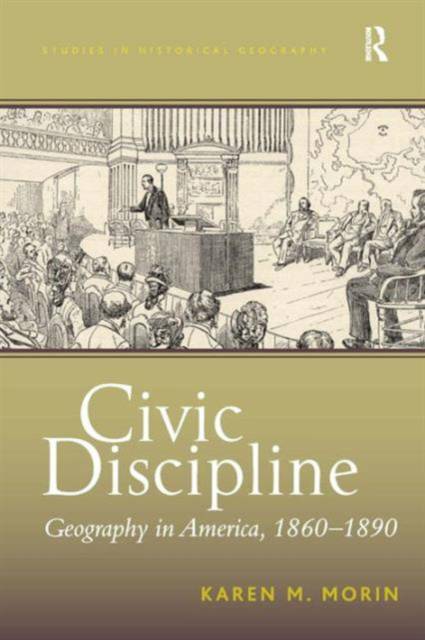
- Afhalen na 1 uur in een winkel met voorraad
- Gratis thuislevering in België vanaf € 30
- Ruim aanbod met 7 miljoen producten
- Afhalen na 1 uur in een winkel met voorraad
- Gratis thuislevering in België vanaf € 30
- Ruim aanbod met 7 miljoen producten
Zoeken
Omschrijving
The American Geographical Society was the pre-eminent geographical society in the nineteenth-century U.S. This book explores how geographical knowledge and practices took shape as a civic enterprise, under the leadership of Charles P. Daly, AGS president for 35 years (1864-1899). The ideals and programmatic interests of the AGS link to broad institutional, societal, and spatial contexts that drove interest in geography itself in the post-Civil War period, and also link to Charles Daly's personal role as New York civic leader, scholar, revered New York judge, and especially, popularizer of geography. Daly's leadership in a number of civic and social reform causes resonated closely with his work as geographer, such as his influence in tenement housing and street sanitation reform in New York City. Others of his projects served commercial interests, including in American railroad development and colonization of the African Congo. Daly was also New York's most influential access point to the Arctic in the latter nineteenth century. Through telling the story of the nineteenth-century AGS and Charles Daly, this book provides a critical appraisal of the role of particular actors, institutions, and practices involved in the development and promotion of geography in the mid-nineteenth century U.S. that is long overdue.
Specificaties
Betrokkenen
- Auteur(s):
- Uitgeverij:
Inhoud
- Aantal bladzijden:
- 258
- Taal:
- Engels
- Reeks:
Eigenschappen
- Productcode (EAN):
- 9781409401438
- Verschijningsdatum:
- 21/03/2011
- Uitvoering:
- Hardcover
- Formaat:
- Genaaid
- Afmetingen:
- 156 mm x 234 mm
- Gewicht:
- 539 g

Alleen bij Standaard Boekhandel
+ 391 punten op je klantenkaart van Standaard Boekhandel
Beoordelingen
We publiceren alleen reviews die voldoen aan de voorwaarden voor reviews. Bekijk onze voorwaarden voor reviews.











